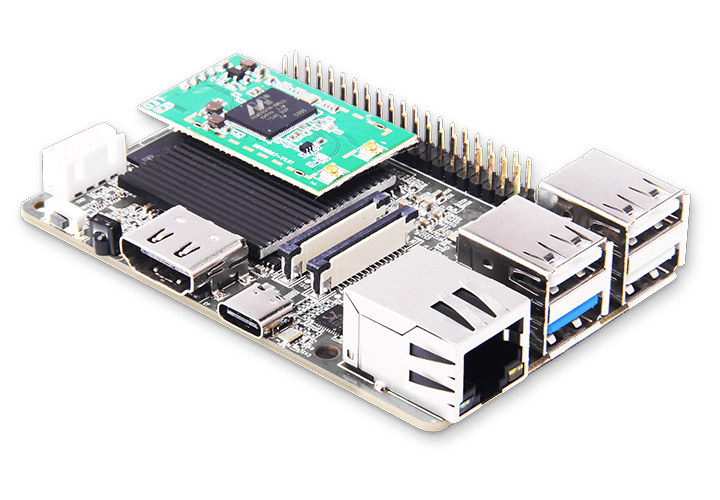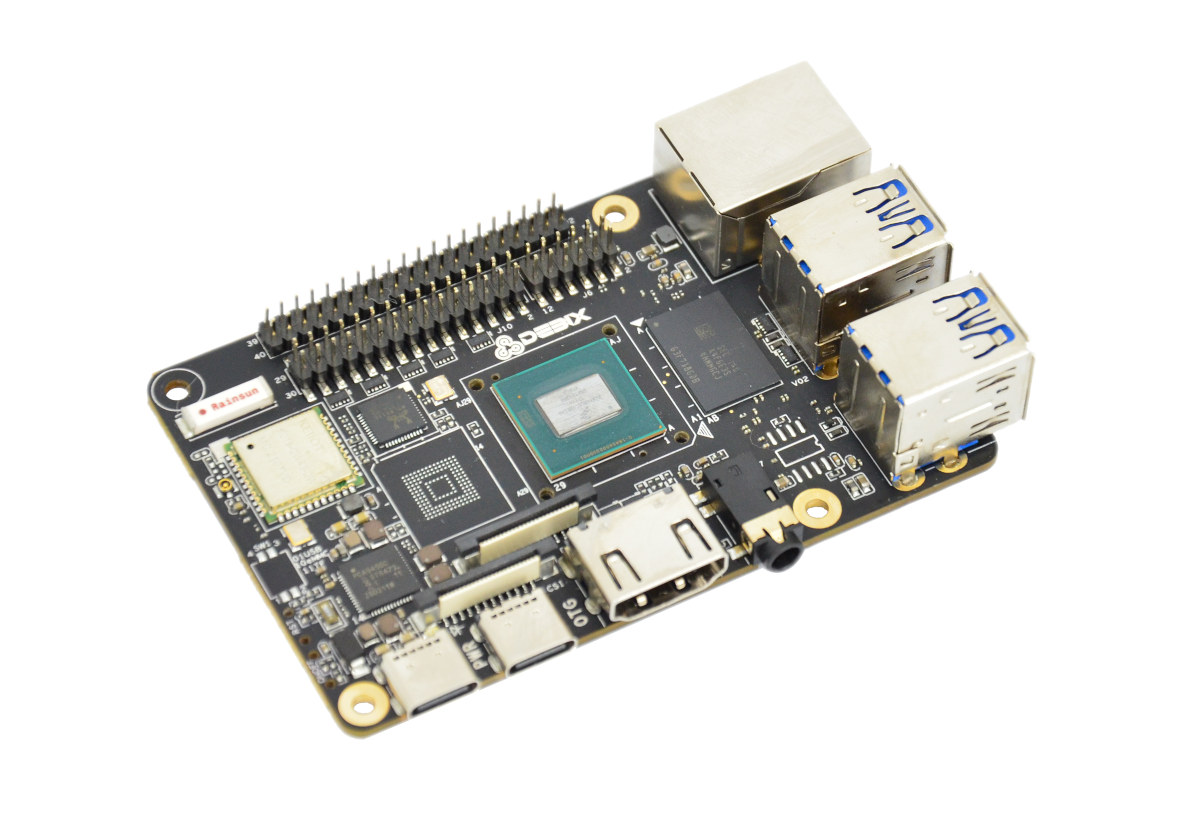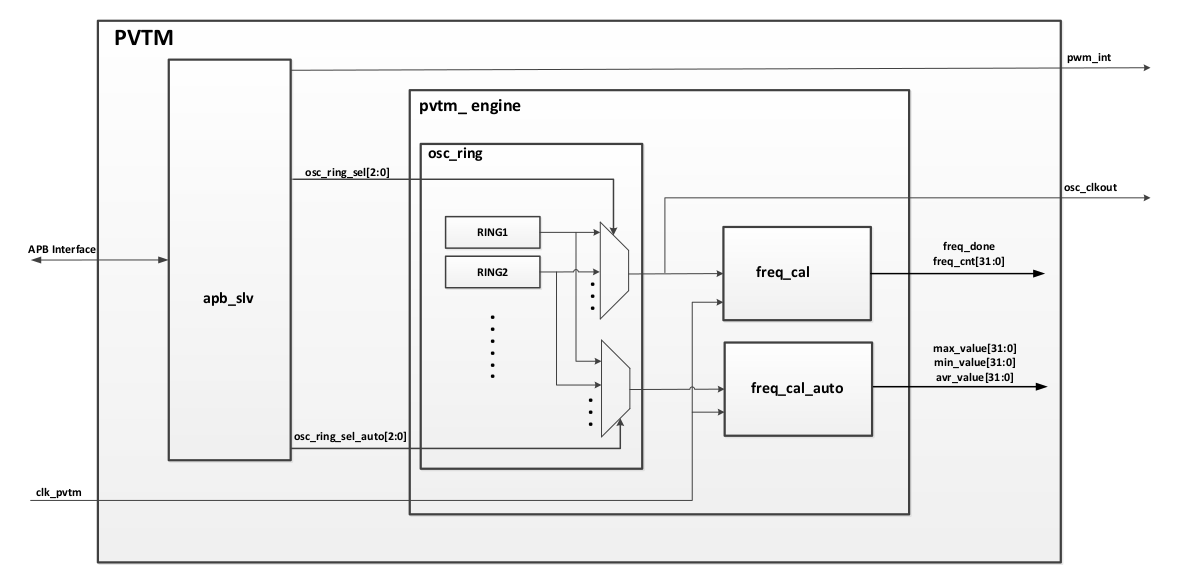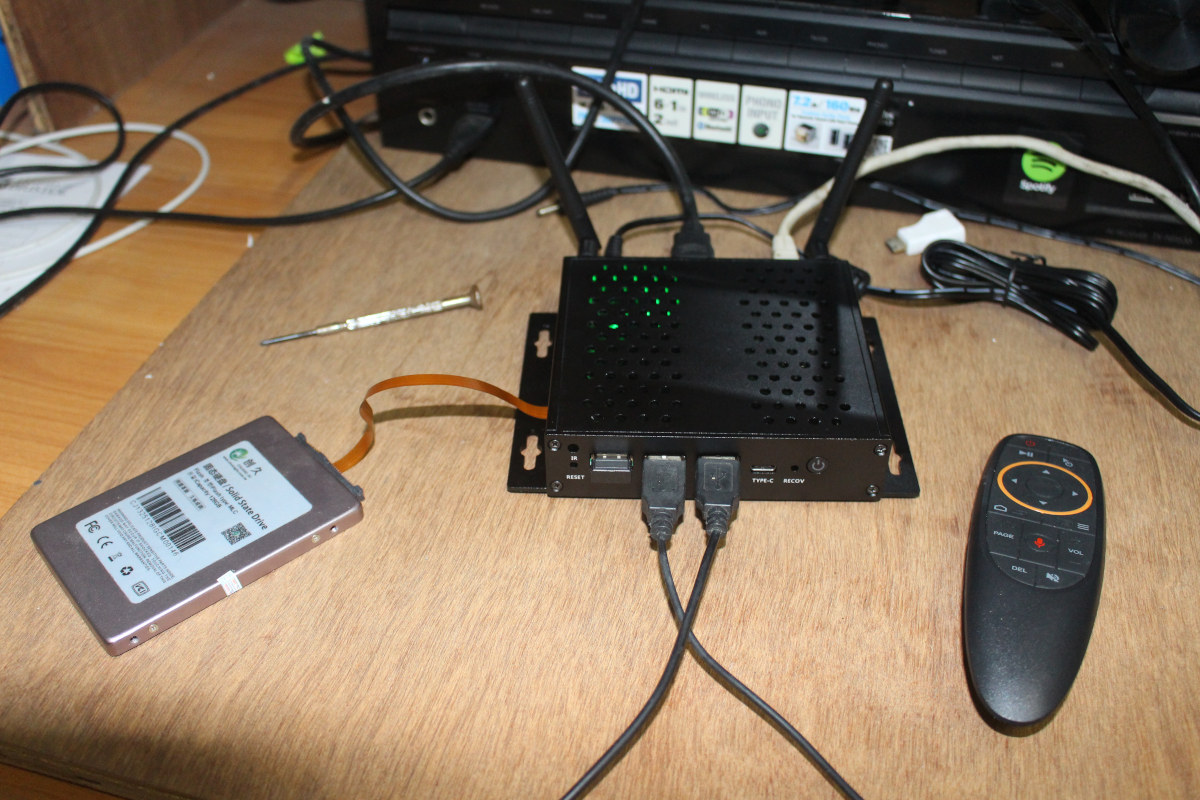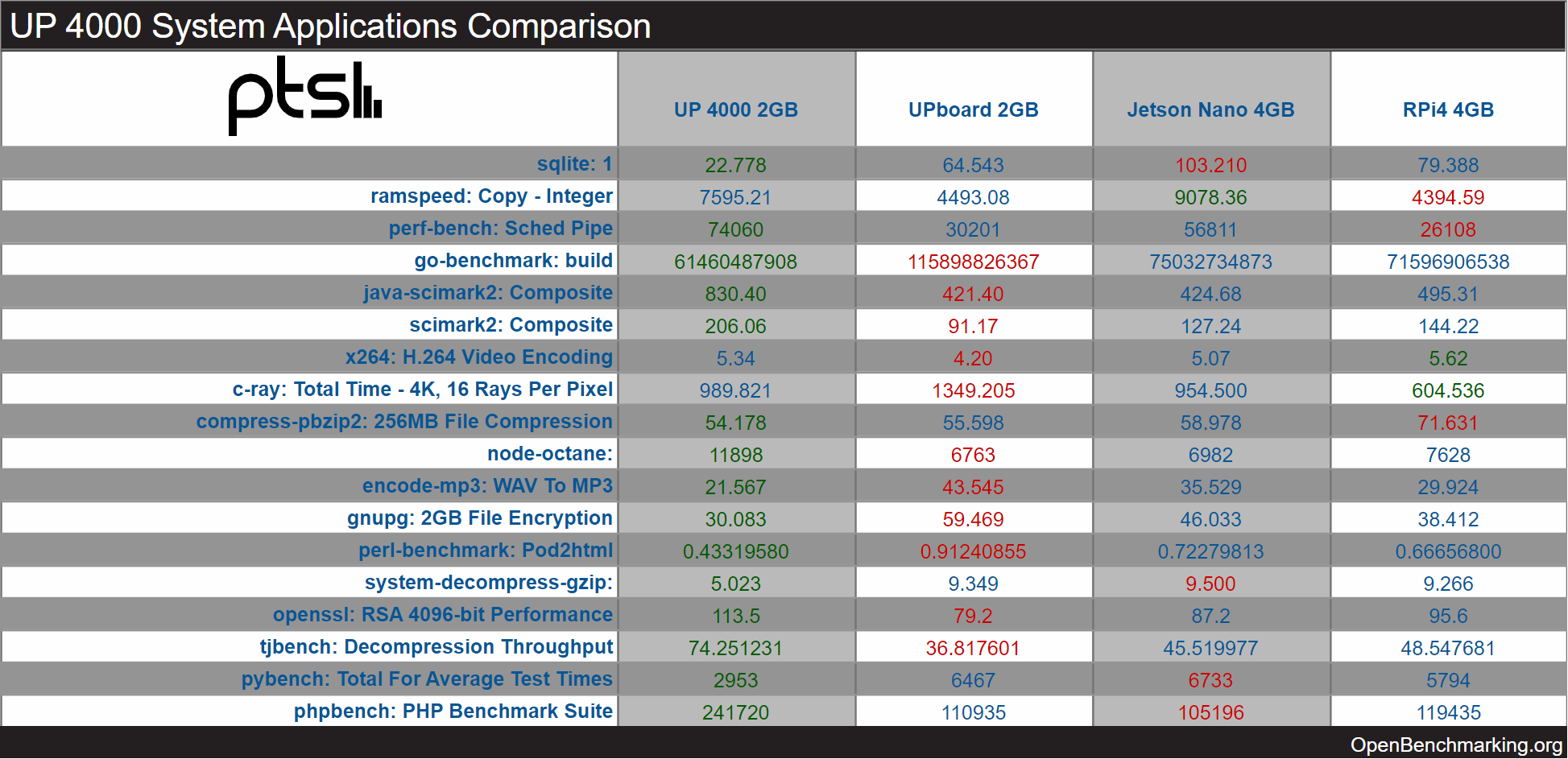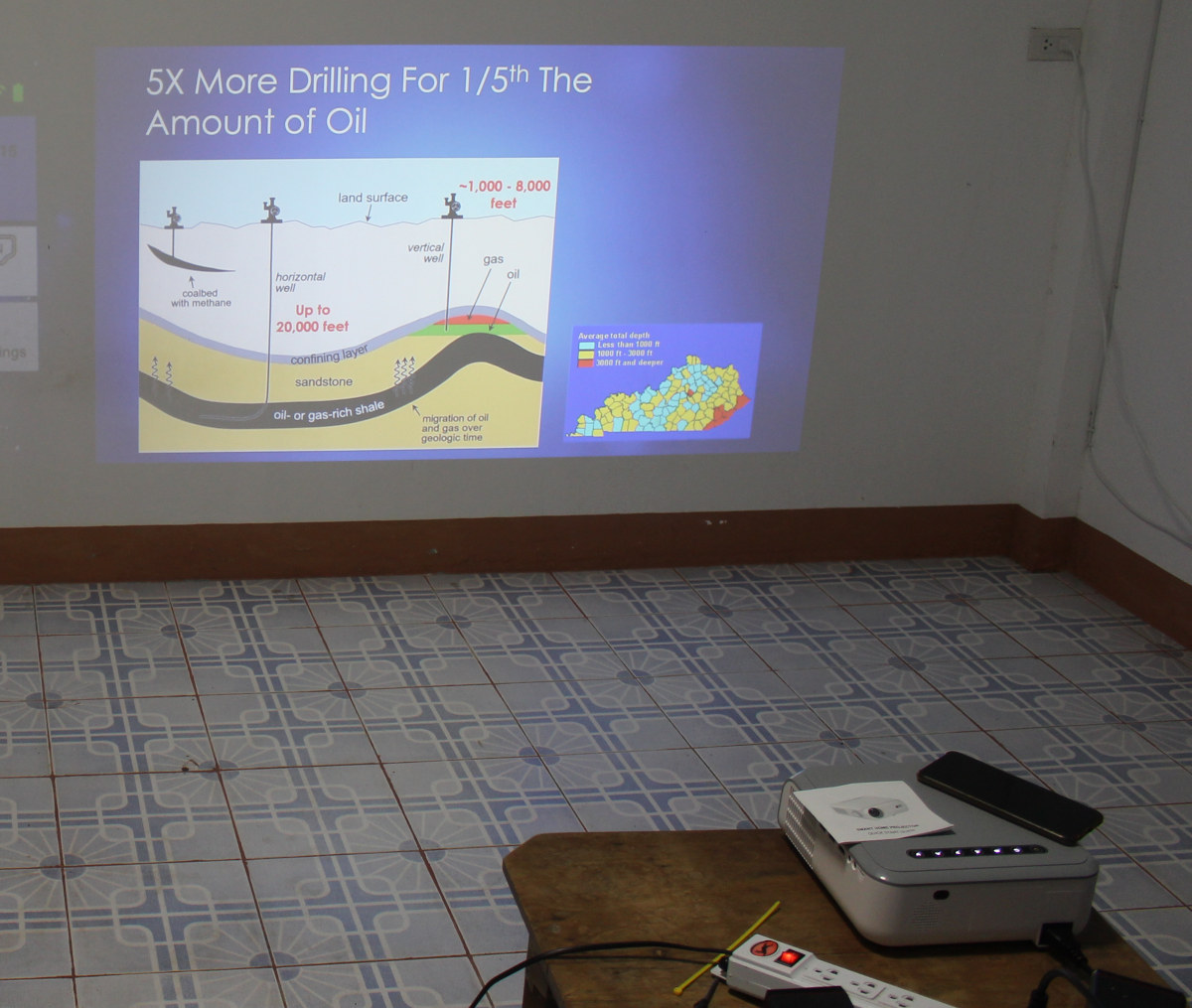Geniatech has added a new member to its XPI SBC family with the business card-sized XPI-3566 board powered by a Rockchip RK3566 quad-core Cortex-A55 processor, and mostly following the Raspberry Pi 3 form factor like its predecessors. The single board computer comes with 1GB to 8GB RAM, up to 64GB eMMC flash, HDMI 2.0 video output, Gigabit Ethernet, dual-band WiFi, a few USB ports, and a 40-pin GPIO header. It is said to target retail, “interactive communication”, and education applications. Geniatech XPI-3566 specifications: SoC – Rockchip RK3566 quad-core Cortex-A55 processor @ up to 1.8 GHz with Arm Mali-G52 2EE GPU, 0.8 TOPS AI accelerator System Memory – 2GB DDR (1GB, 4GB, or 8GB optional) Storage 16GB eMMC flash (8GB, 32GB, 64GB optional) MicroSD card socket Video Output HDMI 2.0 up to 4Kp60 MIPI DSI connector (not listed in the specs, but it can clearly be seen on the board) Camera […]
DEBIX Model A – A Raspberry Pi-inspired NXP i.MX 8M Plus SBC for AI applications
DEBIX Model A is a single board computer powered by an NXP i.MX 8M Plus quad-core Cortex-A53 processor with a 2.3 TOPS AI accelerator in a form factor that combines Raspberry Pi 4 and 3 Model B designs. The SBC comes with up to 6GB RAM, a microSD card slot, an optional eMMC flash of up to 128GB capacity, HDMI 2.0a, LVDS, and MIPI DSI display interfaces, a MIPI CSI camera interface, Gigabit Ethernet and WiFi 5 connectivity, plus a 40-pin GPIO expansion header. DEBIX Model A specifications: SoC – NXP i.MX 8M Plus quad-core Cortex-A53 @ up to 1.6 GHz (industrial) or 1.8 GHz (commercial), with Arm Cortex-M7 @ up to 800 MHz, Vivante GC7000UL 3D GPU, Vivante GC520L 2D GPU, 2.3 TOPS NPU System Memory – 2GB LPDDR4 (4GB/6GB optional) Storage – Default: Micro SD card; optional 8GB, 16GB, 32GB, 64GB, or 128GB eMMC flash Video Output HDMI […]
What is PVTM? Or why your Rockchip RK3588 CPU may not reach 2.4 GHz
While the Rockchip RK3588 processor is advertised as reaching 2.4 GHz, not all RK3588 chips may achieve this frequency. The keyword is PVTM (Process-Voltage-Temperature Monitor), and we’ll try to explain why it does, and why some of the RK3588 processors may only be clocked at about 2.3 GHz, while others will run fine at 2.4 GHz. This all started with Rock 5B SBC debug party, where we noticed our boards did not reach the same frequency. Willy Tarreau noted the “pvtm” value was different between our boards: Willy’s board: (Cortex-A76 cluster 1 @ 2,304 MHz, cluster 2 @ 2,352 MHz)
|
1 2 3 4 5 6 7 |
# dmesg|grep cpu.*pvtm [ 2.606324] cpu cpu0: pvtm=1482 [ 2.606542] cpu cpu0: pvtm-volt-sel=3 [ 2.614206] cpu cpu4: pvtm=1722 [ 2.618389] cpu cpu4: pvtm-volt-sel=5 [ 2.626814] cpu cpu6: pvtm=1744 [ 2.630998] cpu cpu6: pvtm-volt-sel=6 |
CNXSoft board (Cortex-A76 cluster 1 @ 2,304 MHz, cluster 2 @ 2,304 MHz) :
|
1 2 3 4 5 6 |
[ 3.620281] cpu cpu0: pvtm=1490 [ 3.620376] cpu cpu0: pvtm-volt-sel=4 [ 3.627377] cpu cpu4: pvtm=1736 [ 3.631320] cpu cpu4: pvtm-volt-sel=5 [ 3.639103] cpu cpu6: pvtm=1732 [ 3.643069] cpu cpu6: pvtm-volt-sel=5 |
Thomas Kaiser (tkaiser) board: (Cortex-A76 cluster 1 @ 2,400 MHz, cluster 2 @ 2,400 MHz)
|
1 2 3 4 5 6 |
[ 3.117399] cpu cpu0: pvtm=1528 [ 3.117491] cpu cpu0: pvtm-volt-sel=5 [ 3.124529] cpu cpu4: pvtm=1785 [ 3.128495] cpu cpu4: pvtm-volt-sel=7 [ 3.136234] cpu cpu6: pvtm=1782 [ 3.140173] cpu cpu6: pvtm-volt-sel=7 |
For reference, CPU 0 to 3 are Cortex-A55 cores, CPU 4-5 are two Cortex-A76 cores (cluster 1), and […]
CANDuino v3 – A Microchip ATmega168PA board with CAN bus, Arduino Nano form factor
CANduino v3 is the third revision of MassiveButDynamic’s CAN bus board with Arduino Nano form factor based on Microchip ATmega168PA 8-bit AVR microcontroller, Microchip MCP2515 CAN controller with an SPI interface, and Microchip MCP2551 CAN transceiver suitable for 12V and 24V systems. The CANDuino v3 board is now slightly narrower in order to give access to two rows on each side when installed on a breadboard, comes with a USB Type-C port to reduce the number of cables needed, and the CAN bus function can be deactivated via a jumper in order to use the CANduino as a normal Arduino Nano. CANDuino v3 specifications: MCU – Microchip ATmega168PA 8-bit AVR microcontroller @ up to 16 MHz with 16KB flash, 512 bytes EEPROM, 1 KB SRAM CAN Bus CAN L/H header and CAN bus termination Microchip MCP2515 CAN controller connected to the AVR microcontroller over SPI. Supports CAN V2.0B at 1 […]
ASRock Industrial iEPF-9010S/iEP-9010E Edge AIoT platforms feature Alder Lake S CPU, up to 128GB RAM
ASRock Industrial has released the iEPF-9010S and iEP-9010E high-end, rugged Edge AIoT platforms powered by 12th Gen Intel Alder Lake S processors, equipped with up to 128GB RAM, 4G LTE, 5G, Wi-Fi 6E, Bluetooth 5.2 connectivity, and real-time TSN/TCC networking. The I/O rich embedded computers are designed for highly demanding workloads and mission-critical industrial applications such as factory automation, machine automation, robotic control, AI-enabled AOI (automated optical inspection), autonomous vehicles, smart cities, and more. The ASRock iEPF-9010S Expandable AIoT Edge platforms come with the following specifications: SoC – Intel 12th Gen Core, Pentium or Celeron “Alder Lake S” hybrid processor with up to 16 cores and 24 threads, Intel Xe or UHD Graphics fitting in an LGA 1700 socket Chipset iEPF-9010S-EY4 model – Intel R680E iEPF-9012S-EY4 model – Intel H610 System Memory iEPF-9010S-EY4 model – 4x 260-pin SO-DIMM DDR4 3200MHz up to 128GB (32 GB per SO-DIMM) iEPF-9012S-EY4 model – […]
Mekotronics R58 review – Part 2: Android 12 on Rockchip RK3588 CPU
I’ve written the first part of Mekotronics R58 review last month with an unboxing, teardown, and first boot with 3D graphics benchmarks. I’ve now had more time to play with Android 12 on the Rockchp RK3588 mini PC, so I’ll report my experience with the device. User interface and settings As already mentioned, the box ships with Android 12 for TV and the stock launcher. The Google Play store is working, and I had no troubles installing all apps I needed for the review. Most of the settings are pretty much standard. While the first time, I used Ethernet, and also tried WiFi 6 connecting the R58 to Xiaomi Mi AX6000 router. It worked but not without some effort, as initially, all I got were messages like “Couldn’t find SSID” both with 2.4GHz and 5GHz SSIDs. It turned out I had to disconnect the Ethernet to make WiFi work, and […]
Benchmarks comparison between UP 4000, Raspberry Pi 4, UP board, and Jetson Nano
We wrote about the UP 4000 SBC with an Intel Apollo Lake processor and Raspberry Pi form factor yesterday. But today, I noticed the UP community had put up a benchmarks comparison between the UP 4000 board, the original UP board (Atom x5-8350), the Raspberry Pi 4, and NVIDIA Jetson Nano. They used several of the Phoronix Test Suite benchmarks running on Ubuntu 20.04 (x86) or Ubuntu 18.04 (Arm) on all four boards. The UP 4000 board used featured an Intel Celeron N3350 dual-core processor @ 2.40GHz, the 2GB RAM version of the UP Board, an RPi 4 with 4GB RAM, and a Jetson Nano developer kit with 4GB RAM. As one would have expected, the UP 4000 is ahead in most tests, even though they did not select a model with a quad-core processor such as a Pentium N4200. Note that reading the table may be confusing as for […]
MECOOL KP1 smart projector review – Part 1: Unboxing and first try
I’ve just received a review sample of the MECOOL KP1 smart projector with Full HD resolution that ships with an integrated “MECOOL KD5” Android 11 for TV HDMI stick powered by an Amlogic S805X2 processor. The company sent me a sample for review, and in this first post, I’ll check out MECOOL KP1 hardware and give it a first try, before reporting my experience in more detail in the second part of the review. MECOOL KP1 unboxing First, it’s not one of those mini projectors, as the package is fairly large… The device with with HDMI and AV (RCA composite + stereo audio) cables, a remote control, the power cord, and a quick starter guide. The right side of the side comes with the focus wheel and a dust filter. The rear panel includes one IR window, what should be holes for a speaker, and the power input. There’s also […]


